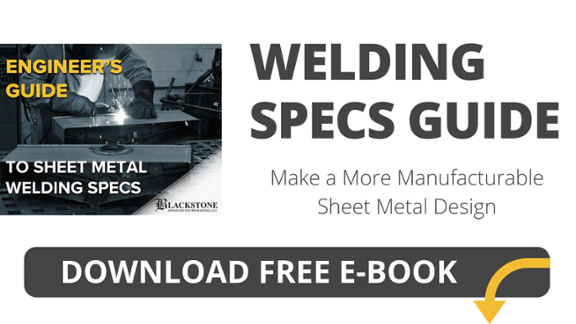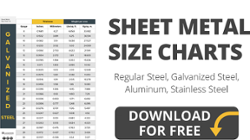 Heat distortion is one of the most common defects that arise from weld specifications. From your end, it’s also one of the most preventable weld defects. You just need to speak your vendor’s language!
Heat distortion is one of the most common defects that arise from weld specifications. From your end, it’s also one of the most preventable weld defects. You just need to speak your vendor’s language!
It’s time to understand heat distortion and how you may be contributing to it. A little education will go a long way toward the success rate of your project.
Weld Defects: How Heat Distortion Happens
You add heat to a metal, and it’s going to warp. This’ll happen to any metal -- some more so than others.
During fabrication it’s important for your welder to distribute heat evenly as much as possible. Uneven temperatures create stress inside the metal, causing distortion and perhaps even cracking eventually.
But here’s the thing: For the most part, your vendor is merely following your directions. If you’re specifying welds in a way that promotes heat issues, it’ll only be harder for your vendor to produce a great product.
Consequences of Poorly Specifying
If your design doesn’t accommodate for heat distortion, your part may not be manufacturable. Even if your vendor ends up making the part, other problems may spring up:
- Your piece doesn’t work correctly.
- You suffer extra labor costs because your vendor wasted time adding pointless welds or making a failed product a second time.
- The extra welds and corrections increase lead time.
What You Can Do
1. Request Fewer Welds
Engineers most often end up with heat distortion by specifying too much welding. Often the engineer making the request is not a welder and living inside the CAD (computer-aided design) world.
Engineers who add this and that to their specifications often fail to consider the consequences of adding one piece to another via heat. You don’t need a weld to seal all the way around!
Your design should include intermittent welds instead of a continuous run, reducing the weld. When welding, less is more.
2. Change Your Metal Grade
Are you insisting on using a metal grade that’s not ideal for welding? Some resist temperature change better than others.
If you’re specifying aluminum, which is notoriously fussy about welding, read up on the easiest grades to work with.
3. Get Your Vendor Involved Early
We get it. You’ve got draftsmen and engineers planning your design, but no welding expert on hand. You’re far from alone -- most companies don’t.
All steps of production are easier if you get your manufacturing partner involved early. A good vendor will recognize immediately if a specification is risky or just plain unreasonable.
It’s Never Too Late to Learn a New Trick
Now that you’ve got heat distortion mastered once and for all, you may benefit from learning the other keys to communicating with your vendor. This guide to welding symbols gives you a tool to further cut down on mishaps in the engineer-vendor relationship.
Knowing your stuff will make your partnership as strong as the welds you’re specifying!



